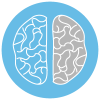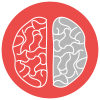Learning while working manifesto
Learning while working manifesto
Our workplaces are changing. The World Economic Forum is calling this change “The Fourth Industrial Revolution.” There are mixed predictions about job loss or job increases but what we do know is work is changing. Change, complexity and collaboration are becoming firmly rooted in the new world order for our workplaces. Knowledge work is the new normal. There is a never ending avalanche of new information and change.
Learning needs to be an integral part of each day’s activities.
The 3Cs – Change, Complexity and Collaboration
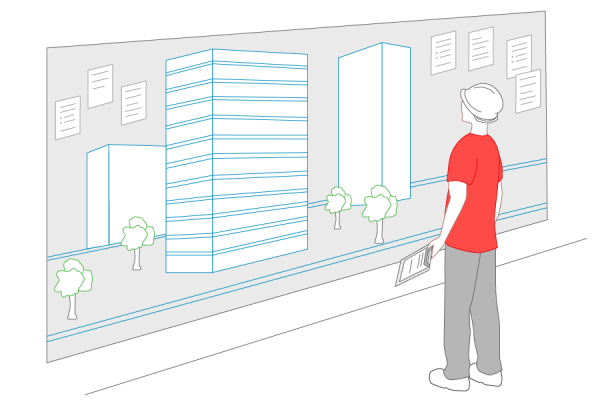
Change
It’s been said hundreds of times that change is the core activity of the modern workplace. Digital disruption is just one of those changes. Other profound changes include the rapidly ageing workforce and the loss of knowledge that goes with it, the changing buying habits of consumers, and the increasing prevalence of outsourcing and offshoring. The very nature of work is changing constantly. This means employees need to be more flexible and open to learning new practices and generating ways of working that add value to the organisation.
Learning and development needs to focus on helping organisations and individuals to be ready for the organisation's future. The challenge is that we don’t yet know what this future looks like. It is therefore even more important for L&D areas to be focused on fostering a mindset of flexibility and openness to new ideas and new practices. The faster the workplace changes the more learning needs to ramp up.

Complexity is the nature of business
People are constantly being flooded with new information and the complexity of the decisions that they need to make keeps on increasing. Jobs that don’t involve this type of expertise are being automated.
Complexity is not the same as complicated. Complexity means bringing together diverse information in new ways and from a variety of sources, and making decisions and generating new understanding. Complexity is okay. It is not the enemy.
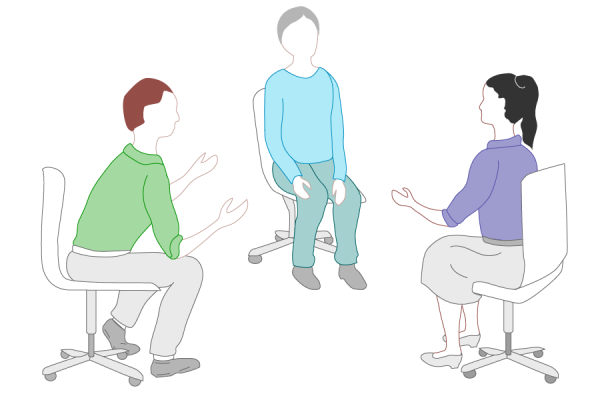
Collaboration
As expertise becomes narrower and deeper the need for collaboration between experts increases. A collaborative way of working is not just about experts working together within an organisation, it is also about establishing seamless partnerships with external professionals. As well as individuals working together, organisations small and large are working in clusters to innovate and take on new challenges. Social networking systems are the enabling technology for these new types of collaboration. Online sharing and collaboration are becoming the norm in our non-work lives, and organisations need to tap into this power.
Workplace learning and the 3Cs
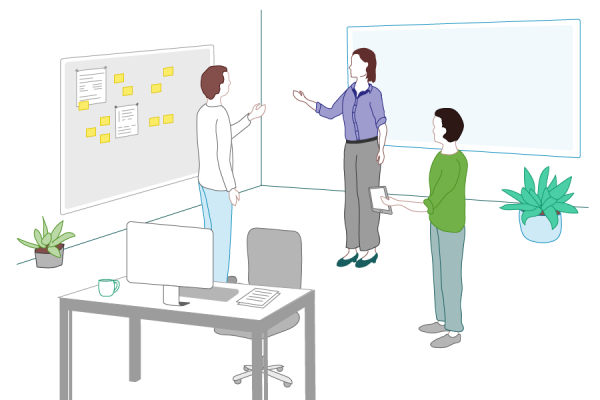
We need a return of what Jay Cross calls our ‘natural way of learning’. At Sprout Labs we call it ‘learning while working’.
eLearning has so much potential but in many cases the result is a simple set of self-paced linear modules that are often slide-based information dumps with a quiz at the end; the only benefit the learner receives is that they don’t have to attend a boring face-to-face class. The use of eLearning is driven by reducing cost, not by transforming the learning culture. But learning technologies offer real possibilities for powerful social and peer learning, spacing learning over time, and personalised adaptive learning.
Learning technologies can give us so much more than a slideshow. Learning and development addresses the need to go beyond designing courses and working in a more holistic way. The challenge is how to go about achieving this. Sometimes we look for examples from other organisations but forget that each organisational context is different. There are approaches such as performance support and performance coaching but these give learning professionals only partial guidance towards a different way of learning at work. They are only one part of the whole learning ecosystem as we see it.
The potential of 70:20:10
In case you haven’t heard of the 70:20:10 concept of learning, it was developed by Morgan McCall, Robert Eichinger and Michael Lombardo at the Center for Creative Leadership in North Carolina in the mid 1990s. They said this about learning:
 |
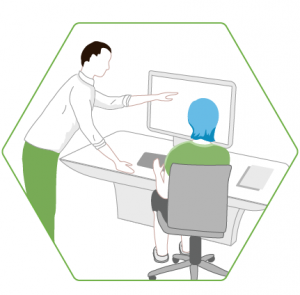 |
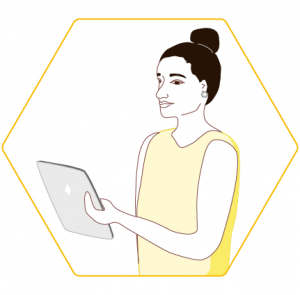 |
| 70% occurs as people engage in informal learning processes such as watching others, participating in workplace routines and undertaking challenging tasks. | 20% arises from mentoring and coaching (mostly from a manager or supervisor). | 10% is the result of formal courses and reading. |
70:20:10 has become widely known because it offers a simple explanation of how learning really happens at work and the need for learning programs to focus on more than just formal learning. It’s also amazingly flexible as it does not specify a particular strategy or use of technology.
70:20:10 is the future, because the future of learning is not just designing and delivering a course. It will focus on designing a mix of experiences and on learning from others. Formal learning, however, often still needs to be part of the mix and is often the starting point for a 70:20:10 model.
The difficulty with 70:20:10 is that it’s a concept for how learning at work happens. It’s not a framework. A framework needs to have a process and often requires considerable guidance. What is powerful about the 70:20:10 concept is that it's flexible and doesn’t lock learning down into having to work in a certain way.
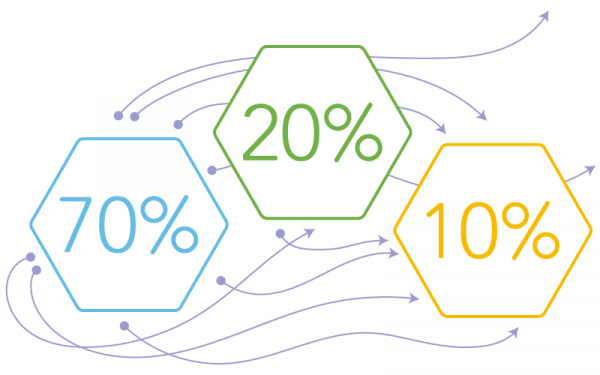
Making learning while working happen
Learning ecosystems, next-generation learning technologies and design thinking
To make learning while working a reality, a combination of learning ecosystems, next-generation learning technologies and design thinking methods are needed.
What is a learning ecosystem?
A learning ecosystem is an entity made up of components that work together to create a whole learning experience. The relationship between the components means that the overall experience becomes more than the sum of its parts. An ecosystem approach provides a means of bringing the 70:20:10 model into reality.
Components of a learning ecosystem
Below are some core components of a what 70:20:10-based learning ecosystem could be.

Pathwaysguides to learning while working |
A learning ecosystem is learner centred, which means learners need to become more self directed. Employees need guidance and pathways to help them learn while working. |
Gardenerslearning from each other |
Learning ecosystems are not just about resources – the driving force behind a learning ecosystem is the people involved. This includes managers and peers inside and outside the organisation. Learning together is a time when employees can reflect on and articulate what they have learned. |
Hothousesspaces to rapidly practise new skills |
Formal learning becomes a learning ‘hothouse’, where learners are provided with somewhere to practise the decision making that they will be doing on the job and gain rapid feedback. |
Streamslearning in the flow of work |
In a learning ecosystem, learning becomes part of the flow of work. It’s part of the environment and is integrated into tasks. |
Foundationsknowledge supports |
The foundations of the learning ecosystem depend on having great knowledge-based support systems in place that enable employees to access knowledge when they need it. |
The new digital learning ecosystem
Most often, an LMS is somewhere that an employee goes to complete the learning they are required to do. The LMS has evolved in such a way that it is used to push learning to employees, but with learning while working, employees need to be able to pull information.
In the past, many organisations (and LMS vendors) have seen the LMS as being a one-stop solution for all their digital learning problems. It’s a monolithic centralised platform. This approach doesn’t accept that people don’t always learn from courses and that a single tool is rarely a perfect fit.
Other industries take a different approach. In digital marketing, for instance, many organisations work with an ecosystem of technologies, or ‘stack’. These are a combination of platforms where each component has a specialised function but they all work together to function as a whole. In a modern workplace we need an ecosystem of learning technologies to support learning while working.
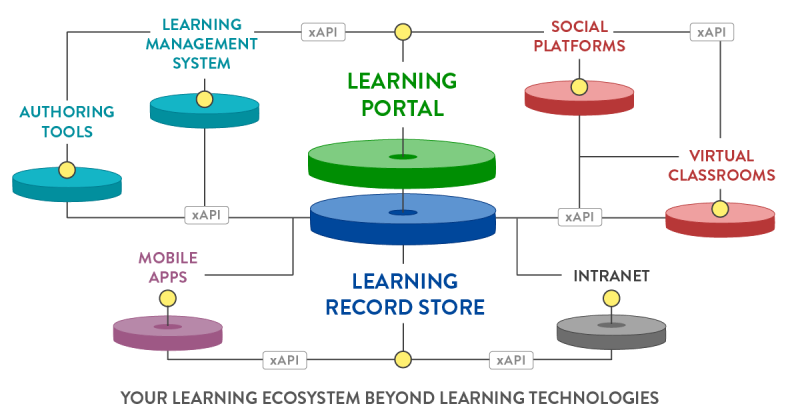
Design thinking and learning while working
To design a learning ecosystem and select the technology to best support it, learning and development needs a holistic process that takes in the complexity of the multiple elements and their coordination. The solution lies in ‘design thinking’.
Design thinking is about taking hybrid creative and analytical approaches that designers use and applying them to any problem. In learning, when you hear the word ‘design’ you think about instructional design or graphic design. Instructional design and the ADDIE process (analysis, design, development, implementation, evaluation) is about designing, developing and delivering a course. Design thinking is a more generalised open process that enables learning people to go beyond just designing a course to designing an entire learning ecosystem. It is a process that enables learning professionals to rethink, redesign and rebuild how learning works in their organisation. It allows them to take concepts like 70:20:10 and create solid learning solutions that work within the context of their own organisation.
What is design thinking?
Design thinking is two things.
The design thinking mindset
IDEO is one of the companies that has led the movement of using design process for solving business problems. IDEO outlines the design thinking mindset as:
- being empathic with people who will be using the solution
- being able to embrace ambiguity
- being optimistic
- working in an iterative way
- being open to learning from failure
- focusing on making things
- having creative confidence.
The word ‘design’ often evokes concepts of creative thinking. Design thinking is different to creative thinking.
|
Analytical thinking |
Design thinking |
Creative thinking |
| Focuses on the problem | Focuses on the solution to the problem | Most of the time there is no problem to be solved |
| Summative | Generative | Generative |
| Focuses on how to deliver the solution | Focuses on the end user of the solution | Doesn’t focus on the end user of the solution – the end user is often irrelevant |
| Focuses on splitting the problem into parts | Is a mixture of holistic thinking and detail | Holistic |
The design thinking process
There are a few different ways to explain the design thinking process. We have chosen a simple five-step process.
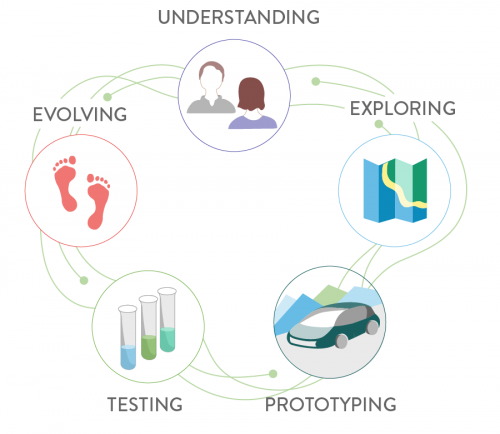
Design thinking and learning
Design thinking gives us a powerful, flexible, open method for designing learning at work to empower rapid change, cope with complexity and increase collaboration. It is a combination of a learner-centred approach and innovative thinking that means learning professionals can generate new learning models that are going to work for their learners and the organisation. It’s both a mindset and a way of thinking that can fix the problems with learning in modern organisations.
Design thinking makes developing a 70:20:10 solution an achievable goal.
Learning while working framework
Sprout Labs developed the Learning While Working Framework to:
- outline some principles for embedding 70:20:10 programs
- provide some common design patterns for 70:20:10 learning programs
- describe a model for a learning ecosystem approach and inform the selection of the technologies needed to support the ecosystem
- give more details of design thinking in practice.


